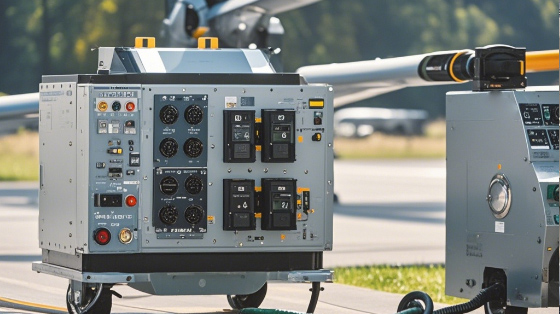Onboard Power Supply: Revolutionizing Electronic Systems
2024/10/25 11:39:56
In the ever-evolving world of electronics, one crucial component that often goes unnoticed but plays a vital role is the onboard power supply. This unsung hero is responsible for providing the necessary electrical energy to power up various electronic devices, from small consumer electronics to complex industrial systems. In recent times, significant advancements have been made in onboard power supply technology, bringing about a new era of efficiency, reliability, and functionality.
The onboard power supply is essentially a power conversion and regulation system that is integrated directly onto a printed circuit board (PCB). It takes in electrical power from an external source, such as a wall outlet or a battery, and converts it into a stable and regulated voltage and current that is suitable for powering the electronic components on the board. This process involves several key steps, including rectification, filtering, voltage regulation, and isolation.
One of the major advantages of onboard power supplies is their compact size and integration. By being integrated directly onto the PCB, they save valuable space and reduce the overall size and weight of the electronic device. This is particularly important in applications where space is at a premium, such as in portable electronics, wearable devices, and small form factor industrial controllers. Moreover, the integration of the power supply onto the PCB also simplifies the design and manufacturing process, reducing costs and improving reliability.
Another significant benefit of onboard power supplies is their efficiency. Modern onboard power supplies are designed to minimize power losses and maximize energy conversion efficiency. This is achieved through the use of advanced power conversion technologies, such as switching regulators and synchronous rectification. These technologies enable the power supply to operate at high frequencies, reducing the size of passive components and improving efficiency. In addition, onboard power supplies often incorporate power management features, such as sleep modes and power-saving algorithms, to further reduce power consumption and extend battery life in portable applications.

Reliability is also a key aspect of onboard power supplies. They are designed to withstand harsh environmental conditions, such as temperature extremes, vibration, and electromagnetic interference. To ensure reliability, onboard power supplies are built with high-quality components and undergo rigorous testing and quality control procedures. This includes stress testing, thermal cycling, and electrical isolation testing to ensure that the power supply can operate reliably under various conditions.
In addition to their traditional roles in powering electronic devices, onboard power supplies are also playing an increasingly important role in emerging technologies such as the Internet of Things (IoT), artificial intelligence (AI), and 5G communications. These technologies require low-power, high-efficiency power supplies that can be integrated into small and portable devices. Onboard power supplies are well-suited for these applications, as they can provide the necessary power while meeting the size, weight, and power consumption requirements of these emerging technologies.
For example, in IoT applications, onboard power supplies are used to power up sensors, microcontrollers, and wireless communication modules. These devices often operate on low power and require a stable and reliable power source. Onboard power supplies can provide the necessary power while also enabling energy harvesting techniques, such as solar power and vibration energy harvesting, to extend battery life or even eliminate the need for batteries altogether.
In AI applications, onboard power supplies are used to power up high-performance processors and accelerators. These devices require large amounts of power and generate significant heat. Onboard power supplies must be able to handle the high power demands while also providing effective thermal management to ensure reliable operation.
In 5G communications, onboard power supplies are used to power up base stations, routers, and other network equipment. These devices require high-efficiency power supplies to meet the demanding power requirements of 5G networks. Onboard power supplies can provide the necessary power while also enabling advanced power management features, such as dynamic power allocation and load balancing, to optimize power consumption and ensure reliable network operation.
As the demand for smaller, more efficient, and more reliable electronic devices continues to grow, the importance of onboard power supplies will only increase. With ongoing research and development in power conversion technologies, materials science, and integrated circuit design, we can expect to see even more advanced onboard power supplies in the future. These power supplies will not only provide the necessary power for our electronic devices but also enable new applications and technologies that were previously unimaginable.
In conclusion, onboard power supplies are a critical component of modern electronic systems. Their compact size, high efficiency, and reliability make them an ideal choice for powering a wide range of electronic devices. As technology continues to advance, onboard power supplies will play an increasingly important role in emerging applications such as IoT, AI, and 5G communications. With their ability to provide stable and regulated power while meeting the size, weight, and power consumption requirements of these applications, onboard power supplies are truly revolutionizing the world of electronics.
Related Information

- 2025.03.14 Who Are Intel's Main Competitors?

- 2025.03.13 recent chip - related news 2025


